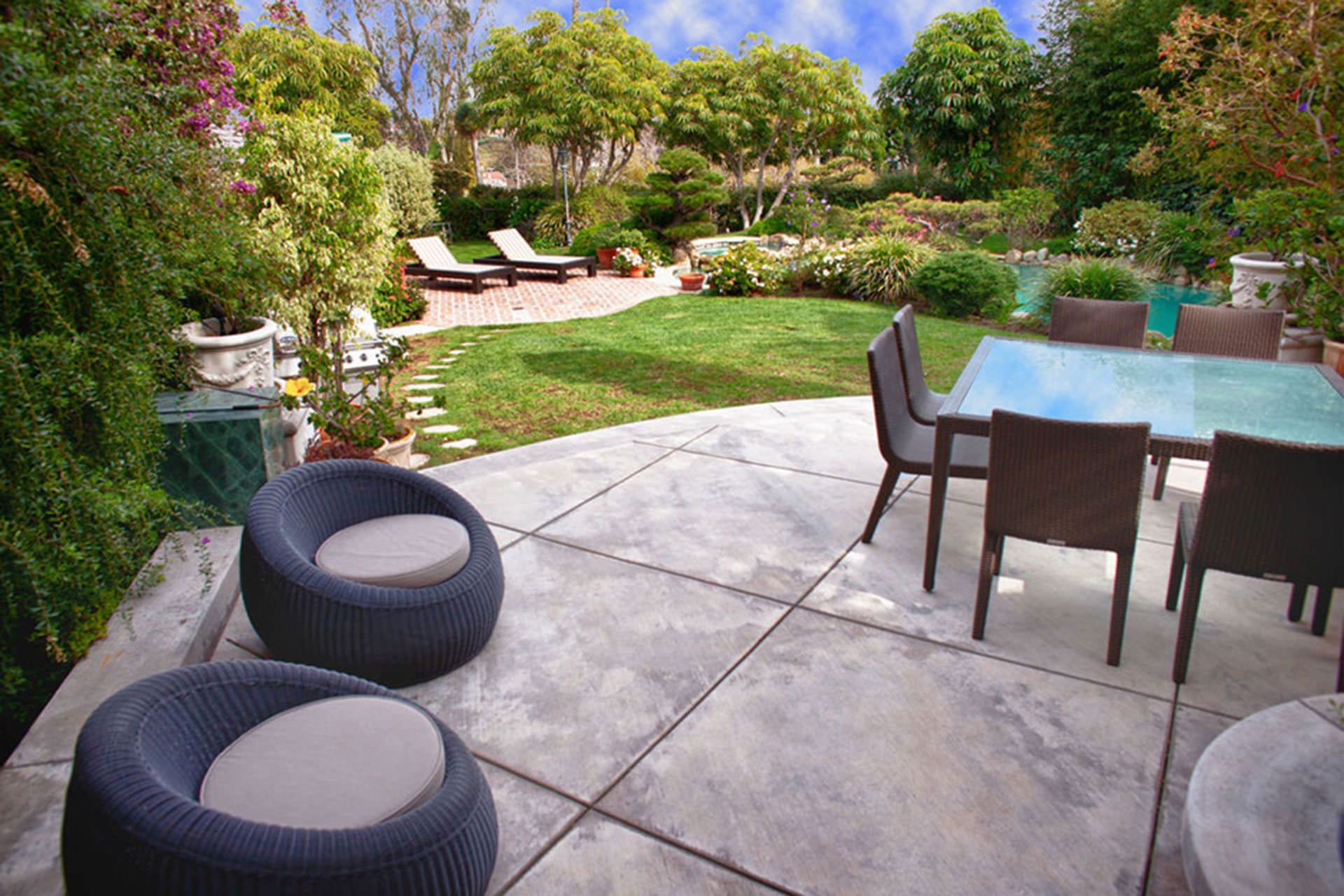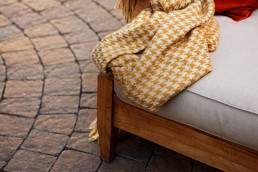Material Matters: Choosing the Best Material for Your Outdoor Space
Choosing the right material for your outdoor space will take a little planning and forethought. Every type of material has its pros and cons, this all depends upon distinctive looks, cost, maintenance, strength, and durability. Once you have understood and considered the different options, you can make a choice that will suite your individual needs and outdoor space.
Here are three options to consider.
Concrete

When considering a hardscaping design, concrete is a popular material used for outdoor spaces due to its relatively low cost, durability, and low maintenance. Enhanced concrete can be stained with color or stamped to create textures that mimic high-end stone or brick at a lower cost. In addition, concrete can be poured into virtually any shape. The downside of using concrete is that the surface can crack and the color often wears off in areas with heavy traffic.
If you are looking for something with a little more flair consider interlocking concrete pavers. These typically do not crack and can easily be replaced if damaged. Other hardscape material options include natural stone, a stunning but pricey option and brick which lends a charming Old World look but is high maintenance.
Wood

If you’re looking for a stunning, unique look, you may want to consider wood for your deck. Here are some popular choices of wood for decks, and other wooden structures in your outdoor space:
- Pressure-treated lumber is an ideal product for patios in contact with the ground as well as places with high moisture. This product is inexpensive, hardy, and readily available, but requires yearly maintenance to maintain its good looks.
- Redwood is a popular and naturally rot-resistant wood. If sealed, it is also durable and long-lasting. The reddish hue will not be suitable for all homes and the cost is among the highest for natural woods.
- Cedar is less expensive than redwood and is rot-resistant and durable. Cedar weathers to a pleasant silvery gray unless you apply a sealer. This type of wood is popular in coastal areas.
- Hardwoods like teak, mahogany, or ipé, are gorgeous, classy, and durable, but also very costly.
- Composite wood, made of plastic and wood fiber, provides the look and feel of wood and offers low maintenance. The material will not warp, shrink, or split. This building product can be stained or painted.
- Vinyl offers minimal maintenance and color durability. However, vinyl decking often lacks the appearance of real wood and can be more expensive.
Interlocking wood deck tiles are available and clip together for an instant outdoor floor over any hard surface that adds texture and interest. Keep in mind, wood is not as durable and long-lasting as concrete and requires more maintenance including resealing and repainting.
Exposed Grass

Do you prefer to enjoy the soft feel of grass under your bare feet as you enjoy outdoor living? Another option is using exposed grass for your outdoor space.
Grass can also be planted between flagstones to create a natural look and feel. Dwarf Mondo grass works well in this situation. If you’re looking for minimal maintenance and want to save money on watering costs and gardeners, synthetic grass is another alternative and can be used for patios, terraces, entertainment areas, and rooftop gardens.
A wide variety of materials are available for your outdoor living space. Take into consideration your lifestyle, budget, personal preferences, and maintenance requirements and you’ll be able to choose the right materials to create a perfect outdoor getaway.
Retractable Solutions for Outdoor Spaces
Please complete the form below to download our free eBrochure.
Price List included
Related Posts
January 8, 2014
The Endless Value of Outdoor Spaces
January 6, 2014



